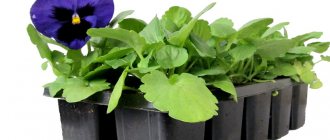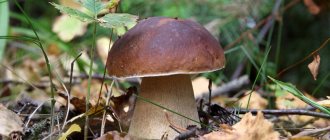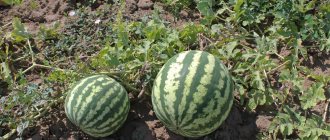Viola, or, as many people like to call it, pansy, is a biennial plant of the Violet family. The variety of varieties makes it possible to choose any color to create compositions on flower beds, lawns, ridges, rockeries, and alpine slides. Viola flowers can delight you with their cheerful sunny appearance throughout the summer and in the fall until frost. To do this, they use different options for growing from seeds - you just need to choose the one that is suitable for each specific case.
Characteristics of the viola plant
Viola is a flowering ornamental plant, reaching a stem height of 30 centimeters, crowned with a large flower. It is widely used in creating decorative borders and in the decoration of low shrubs. Pansies look very organic as a decoration for alpine slides.
Viola easily takes root in a new place: it can be replanted even during the flowering period.
There are varieties:
- Annuals;
- Perennial.
It is preferable to plant these flowers in a well-lit place, but where the sun does not last all day. Both excessive shade and excessive sunlight will damage them.
The characteristics of flowering will directly depend on what variety you have in front of you and how long ago it was planted.
There are many varieties of street violet, but its ampelous variety is especially popular among gardeners. Its appearance resembles a lush ball, generously strewn with large flowers.
Usually such a viola is placed in a hanging pot. The plant is undemanding in care and can withstand low temperatures. It only takes two weeks for the seeds to grow into a lush plant, pleasing the eye with bright flowers.
If you place the ampelous viola in intense sunlight, its flowers will reach large sizes and brightness. But they will fade faster than that of a plant that is in the shade.
Landing dates according to the lunar calendar
When planting, gardeners all over the world rely on a special calendar – the lunar calendar. It is believed that the Moon has a special effect on plants, causing an increase or decrease in vitality, like the ebb and flow of tides.
This calendar highlights the most favorable and unfavorable days, each month has its own, since everything depends on the date of the full moon and new moon - on these days it is strictly prohibited to do gardening.
So, when to plant viola seedlings? The following periods should be taken into account:
| Month | Favorable days | Unfavorable days |
| January | 17, 18, 19, 23, 24, 25, 26, 27 | 5, 6, 21 |
| February | 6, 7, 8, 11, 12, 13, 14, 15, 16, 17, 23, 24, 25 | 4, 5, 19 |
| March | 12, 13, 14, 15, 16, 17, 19, 20 | 6, 7, 21 |
| April | 6, 7, 8, 11, 12, 13, 15, 16, 17, 29, 30 | 5, 19 |
| May | 8, 9, 10, 11, 12, 13, 14, 15, 16, 17, 21, 22, 23, 26, 27, 28 | 5, 19 |
Another important factor that affects the timing of planting is the climatic features of the region. The territory of Russia is huge, so each region has its own deadlines. Here everything depends on the depth of soil freezing, the abundance or lack of moisture, and solar energy.
These conditions may change from year to year, therefore, starting in early spring, it is recommended to listen more carefully to the forecasts of weather forecasters, who can predict in advance when warming is expected.
Viola propagation methods
Pansies can be propagated in several simple ways.
Viola seeds
Before planting in the ground, the seeds must be treated with Zircon and Epin solutions. It is necessary to sow at the end of spring in soil that has had time to warm up well and does not have surface groundwater.
These violets grow very well on loam with humus. When creating soil yourself, it is permissible to mix peat and humus in equal parts, adding a little sand to them.
The only thing pansies cannot tolerate is stagnant moisture. Therefore, they have no place in a shady lowland.
- It is necessary to plant by forming grooves about 6 mm deep for the seeds, at the rate of approximately 50 grains per meter.
- Experienced flower growers recommend pouring 3 or 4 seeds into each hole, and digging them out at a distance of just over half a meter.
- After planting, the seeds are slightly buried, covered with soil and watered abundantly.
- To avoid excessive drying of the soil at the planting site, it is best to sprinkle it with a little layer of sawdust.
Flowering occurs approximately in the first ten days of June. At first, it is recommended to protect weak sprouts from direct sunlight.
If the violet is two years old, its seeds are planted only with the onset of real summer heat. Caring for them is the same as described above. They are transferred to a permanent place by the end of summer, and for the winter they are insulated with leaves or branches of pine and spruce. They will delight you with flowers next season.
Viola seedlings
To propagate viola by seedlings, the seeds are planted in boxes with proper and fertilized soil. Germination must be carried out at high temperatures (more than 20 degrees). When you see the first shoots, feel free to reduce the temperature by 10 degrees.
After a few days they can be seeded out a little, and after another two weeks they can be placed at a distance of about 6 centimeters. Sprouts can be placed in open ground about 2 months after planting the seeds.
Viola cuttings
Over time, perennial varieties of pansies tend to grow laterally and become smaller during flowering.
- To rejuvenate the plant, cuttings are cut from it and planted in dug holes.
- In order to germinate properly, they must be kept out of direct sunlight in soil saturated with moisture.
- There should be 3 nodules on a shard cut from the top of the plant.
- It is buried half a centimeter into the ground and protected with a film or glass coating.
The cuttings are carefully cared for: they are systematically irrigated with water from a diffuser and the protection is raised for ventilation. When rooting occurs, the seedlings are separated.
They will bloom only at the beginning of next year. If you want to wait for flowers in the summer, then you need to prepare cuttings in early spring.
Caring for pansy seedlings
Caring for viola seedlings after planting is a necessary stage of growing plants, which requires your time and effort. But it will help to grow strong and healthy seedlings. It is necessary to care for crops before germination using the following technology:
- After sowing, place the bowl in a warm, dark place. Temperature: +20-21°C .
- Water until shoots appear using a spray bottle. The soil should always be moderately moist.
- Ventilate the container every day by removing the covering material. Be sure to wipe off condensation from its surface every time.
With proper sowing and care, the first shoots will appear in about ten days.
After germination, care changes slightly:
- Remove the film or cover permanently.
- You need to move the seedlings to a well-lit place. Plants must receive light for at least 12 hours, so they need additional lighting (both before picking and after).
- The temperature should be reduced to 12-15 (but not more) degrees Celsius.
- Now you should water using a syringe or syringe. Apply moisture carefully so that it does not fall on the plants themselves. The soil should remain moderately moist at all times.
Care and cultivation of viola in open ground
Violas are completely unpretentious in care, but they still absolutely need some attention. The florist should not forget about regular watering, necessary weeding, loosening and fertilizing.
In order for the viola to bloom brightly and abundantly, it needs to be planted in an area where it will remain in the shade for at least a couple of hours a day. This way you will avoid the plant drying out from direct sunlight.
- Pansies need to be watered every day. This is especially true in the summer heat and during the flowering period. But watering should be moderate, otherwise the plant is at risk of root rotting due to stagnant moisture, and in some cases, death.
- Weeds must be removed constantly. After all, violet is a low plant that needs good lighting and moisture. Weeds are its competitors in the fight for sunlight, nutrients and life-giving moisture.
With regular loosening, the soil is saturated with the oxygen necessary for violets. If this is not done, the soil accumulates nitrogen, which threatens the plants with the appearance of pests.
Selection of location and conditions of detention
Growing viola is possible only if certain conditions are met. Let's find out what is needed for the healthy growth of a tricolor violet.
Lighting and location
Viola loves bright sun, but it should not shine on the flowerbed all day. Therefore, it is better to choose a place where the shadow falls on it closer to the middle of the day. You can plant violets near a high fence, against a wall or in the garden.
Temperature
The optimal temperature for growing viola in the garden is +18…+20 °C. But the flower can withstand night cold and even light frosts. And during the day it tolerates heat up to +30 °C and above.
Air and humidity
Flowers thrive in moderately humid air (50-70%). Overwatering can lead to the development of fungal infections. It is better not to place pansies in a draft.
Priming
Tricolor violet likes to grow in humus-rich, loose and moist soils with a neutral reaction. Flowers love it when the soil contains black soil, humus, river sand and high-moor peat. They respond well to the addition of wood ash: it enriches the soil and neutralizes acids in it.
Feeding and protecting viola from parasites
Pansies should be fed with mineral fertilizers once or twice every 30 days. This will depend on the quality of the soil. It is strictly not recommended to use organic fertilizers!
- For fertilizing, use 30 grams of superphosphate fertilizer or saltpeter per square meter.
- The main pest of viola is powdery mildew. Its appearance is provoked by the excessive presence of nitrogen in the soil or insufficient watering.
In this situation, watering with a solution of soda ash with the addition of laundry soap is used. Flower growers also recommend Fundazol. It is also used to combat botrytis fungus and blackened stems in plants.
Preparing for sowing
Sowing is an important stage in growing viola. To get strong and healthy seedlings, you should properly prepare the seeds, soil and containers for planting.
Seed preparation
For sowing seedlings, you can use both purchased and independently collected seeds. In viola they do not have good germination. Therefore, it is better to choose fresh planting material collected no more than 2 years ago.
For purchased seeds, it is important to pay attention to the information on the packaging.
- about the time of seed collection and expiration date;
- information about pre-sowing treatment;
- recommendations on sowing time;
- period from sowing to flowering.
Before sowing, damaged seeds must be discarded. Seed material collected independently is subject to especially careful inspection. To prevent the development of diseases, the seeds are subjected to a 2-hour disinfection treatment in a slightly pink solution of potassium permanganate. Disinfection can also be carried out using fungicides: Fundazol, Fitosporin, Baktofit, Vitaros, using them in strict accordance with the instructions.
The stratification procedure (creating conditions close to natural that promote germination) helps to increase the germination of seeds.
Sequence of stratification
- Spread the viola seeds on a damp cotton cloth.
- Fold the napkin so that the seeds are inside.
- Place a damp cloth with seeds in a plastic bag.
- Place the bag in the refrigerator for 4-7 days.
- When the napkin dries, moisten it with a spray bottle.
An increase in the number of seedlings is facilitated by treating seeds with preparations: Zircon, Epin-Extra, Baikal Em-1, Kornevin. Recommendations for processing are indicated in the instructions for the drugs. This processing can be carried out after stratification or without it.
Fans of organic farming use instead of industrial preparations for processing:
- honey (1 tsp per 1 glass of water) - immerse seeds for a day;
- aloe (1 tbsp juice and 1 glass of water) – soaking the seeds for 5–6 hours;
- wood ash (two-day infusion of 1 tablespoon of ash in 1 glass of water) - soak the seeds in the solution for 5-6 hours.
Soil selection
Loose, permeable, slightly acidic (pH 5.5-6.0) soil is suitable for sowing violets. In specialized gardening stores you can buy balanced soil mixtures for growing violets.
When purchasing, be sure to pay attention to the presence of loosening elements in the soil (vermiculite, sand, perlite). If they are not included in the composition, they should be added at the rate of 1 part baking powder to 4 parts soil.
You can prepare soil suitable for seedlings yourself. To do this, take garden soil, humus, peat, sand in a ratio of 2:2:2:1, or equal parts of humus, turf soil and sand.
Self-prepared soil must be subjected to preliminary (1-3 days before sowing) disinfection. The soil is shed with a solution of Fitosporin-M (2.5 g per 10 liters of water), Gamair (1 tablet per 1 liter of water) or potassium permanganate (pink-red).
Instead of using a solution, the soil mixture can be heat treated in the oven at 70°C for 30 minutes, after which it is sifted.
Selection of capacity
Any container is suitable for sowing viola: plastic, clay, peat, wooden. Plants tolerate transplantation well, so sowing is often carried out in a common container: wide, but not too deep (6-8 cm).
Sowing containers, with the exception of peat ones, are disinfected with a saturated dark red solution of potassium permanganate.
Wintering viola
For wintering, perennial plant varieties must be covered using dry leaves, spruce and pine legs. As soon as it gets warm enough, the protective layer must be removed immediately.
Formed seeds should be collected before they fall into the soil, as soon as the testes turn yellow.
Viola is a completely unpretentious plant to care for. It is enough to follow the simplest rules and give her the necessary minimum attention so that this beauty does not get lost against the background of other flowers and is pleasing to the eye!
When will the shoots appear?
Following the rules for sowing viola seeds allows you to see seedlings within 7-10 days. But sometimes seed germination takes up to 3-4 weeks. Such a long delay can result from:
- using old seeds;
- sowing in dense, compacted soil;
- Sprinkling the sown seeds with a too thick layer of soil (more than 0.5 cm).
Photo of growing viola on a personal plot
Possible problems
Viola may be susceptible to pests. Aphids, spider mites, powdery mildew or stem rot are especially common. The action of pathogenic microorganisms slows down the growth and development of flowers, they lose their aesthetic properties and become inconspicuous.
Viola is treated with special compounds - insecticides, which can be purchased at a gardening store.
Viola will become a real decoration of the garden and will fit into any flower arrangement. The main thing is to plant seedlings in a timely manner and care for them, taking into account all the recommendations given in the article.
Source











